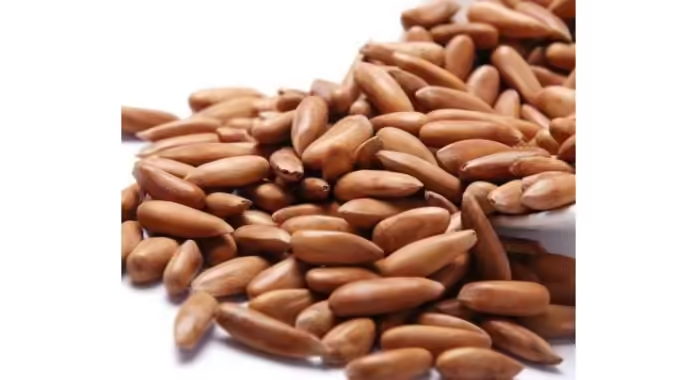Pine Nut prices in Pakistan have crashed drastically!
For years, chilghoza has been a prized luxury item in Pakistan, mostly reserved for winter delicacies or special gifts. But an unexpected twist hit the market this year: pine nut prices in Pakistan have crashed drastically, sending shock waves among farmers, thrilling buyers, and reshaping the seasonal trade across Balochistan.
What used to sell for Rs 15,000 to Rs 18,000 per kilogram now has tumbled down to an incredible Rs 6,000 to Rs 9,000. In some parts of Zhob and Sherani, it has gone down even further, dropping as low as *Rs 3,000 to Rs 5,000 per kilogram*, levels unseen in years.
A Market in Freefall: What Triggered the 50–60% Price Drop?
The slump didn’t happen overnight. Farmers and traders say there are two major factors that have squeezed the chilghoza market this year:
1. The Closure of the Pakistan-Afghanistan Border
This border forms a lifeline for the pine nut business since labor movement and cross-border trade are facilitated in this border area, which are essential for both harvesting and distribution.
However, repeated closures this season stalled exports, delayed shipments, and left traders with no option but to offload their stock domestically—at whatever price the market would bear.
2. No Rainfall Almost at All
The Sherani and Zhob forests are heavily dependent on rain-fed conditions. Sparse rainfall weakened the yields and disrupted harvesting cycles. Traders were battling both natural and economic hurdles as options for storage were limited, with fewer high-quality nuts available.
Cold Storage Crisis: The Hidden Culprit Behind Falling Prices
Experts point out to another important but neglected issue: lack of cold storage facilities in Balochistan .
Pine nuts are delicate; if not kept at low temperatures, they start to lose moisture and weight, directly reducing the value in the market.
Traders, without modern storage, are mostly subjected to the risk of spoilage and are left with no option but to sell quickly at lower rates to avoid losses.
This infrastructural gap has become a defining factor in this year’s price crash, pointing to a long-standing need for investment in rural agri-storage systems.
Winners and Losers: How the Price Drop Is Shaping the Market
While farmers suffer heavy financial setbacks, urban and rural buyers are experiencing something rare: affordable chilghoza.
For years, pine nuts have been beyond the reach of many households, but that seems to be changing. From street hawkers to dry fruit shops to the local candy maker-seller, everyone is cashing in on the newfound interest of consumers.
Yet the excitement among consumers stands in deep contrast to the struggles of those who cultivate and trade the precious nut: for farmers, the season has brought more anxiety than profit, and many fear that continued instability could drive them out of the business.
What is the Future of the Pine Nut Industry in Pakistan?
The sharp decline in pine nut prices in Pakistan points to more severe underlying problems, from storage deficiencies to border-dependent trade networks.
If these issues are not resolved, the volatility may continue to persist, hurting not only local producers but also damage Pakistan’s reputation as a top-quality chilghoza exporter.
But experts believe that this sector has the potential to bounce back stronger than ever, with proper infrastructure, policy support, and predictable trade routes. For now, buyers may be celebrating, but the story unfolding behind the scenes reveals an industry at a very critical crossroads.
Visit Pakistan Updates for more news and developments shaping the nation’s economy and communities.




